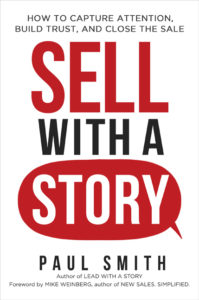Podcast: Play in new window | Download | Embed
Subscribe: RSS
Podcast (sell-with-a-story-series1): Play in new window | Download | Embed
Subscribe: RSS
 For some reason, when you’re in the speaking business you’re constantly asked to work for free.
For some reason, when you’re in the speaking business you’re constantly asked to work for free.
I don’t imagine school teachers or farmers or physicists are often asked to travel across the country to teach children, grow crops, or uncover the hidden mysteries of the universe without pay. But in my line of work, and many other professional services, it happens all the time.
And while there may be times when that’s appropriate (for a charity you believe in strongly, for example) many of us end up getting convinced (or coerced) into thinking that it would be a good idea for less noble purposes. “It’ll be good exposure for you,” they say, or “you’ll probably be able to sell a few books in the back of the room.”
Perhaps. But if you’re in the position to have to make that decision on occasion in your service business, I’ve come across one more reason you might want to say no. And it was articulated best by Thomas Paine over 200 years ago:
That which we obtain too easily, we esteem too lightly.”
Consider this experience:
Six years ago, I’d just started a side job teaching executive training courses on storytelling as a leadership and influence skill. My first book had just come out and was selling well, so I was able to command a respectable fee for my new services.
As a result, my clients took the training very seriously. They’d have a driver pick me up at the airport to make sure I arrived on time to the right location. Everyone invited was expected to attend the whole event and pay attention. People came prepared having done their pre-work, asked smart questions at the end, and participated in the homework and practice sessions in the following weeks to make sure the training sunk in.
Then one day I got a request to do the training for a major retail customer of the company I worked for in my day job. To charge them my usual fee would have been a conflict of interest and a violation of company policy. So, I agreed to do the engagement for free. Here’s how that went —
First of all, they asked me to only conduct a 2-hour event. Think about that. The people who had to pay usually ask for the full day. But the people who got it for free only wanted 2 hours, even though I told them I would give them the full day.
Next, instead of a driver at the airport for their keynote speaker, I was told to just rent a car and find my way to their headquarters. Okay, not a big deal, but here’s what happened when I got there (and precisely why paying clients often arrange transportation). I went into the lobby and told the receptionist who I was and why I was there. Then I sat in the lobby, and waited, and waited, and waited — for over an hour.
Then, about 15 minutes after I was scheduled to start the training, I got called to the reception desk to take a phone call from my sponsor. He said, “Hey, looks like you’re at HQ. Yeah, last week we decided to move the training to an offsite location about 20 minutes away. Sorry, I guess nobody told you. Here’s the address.”
“Okay. Well, what have you guys been doing for the past 15 minutes?”
He said, “Oh, we’ve just been working on other stuff. When I looked at the clock and realized you weren’t here I figured you’d gone to the main office. But, we’ve still got a little time. Come on over and give us what you’ve got.”
Seriously. “Give us what you’ve got.” Like I was dropping off samples of floor tile.
It was very clear this training wasn’t that important to them. Not surprisingly, less than half the audience had done the pre-work. People stepped in and out of the session to take calls or attend other meetings. Several people tried to work on their computer intermittently during the training. There were fewer than the usual number of penetrating questions. And almost nobody participated in the follow-up.
It wasn’t a complete waste of time. But it was clearly of less value to them than it was for my paying clients who received exactly the same content.
It might have been different had it been at a conference where nobody in the audience knew how much (or little) the speaker was being paid. But everyone at this company knew me as an unpaid supplier there on his own dime instead of a bestselling author they were paying good money to learn from for the day.
Conclusion
My conclusion is that there is some truth to the adage “you get what you pay for” in more ways than one. When people don’t pay you for your services, they’re less likely to value your content as highly.
Now, I’ll admit that’s not always the experience I have when I occasionally accept a pro bono client. In fact, it’s rare. But it absolutely never happens with a paying client.
My Parenting with a Story Podcast from last week actually describes a similar situation with a psychiatrist who came to the same conclusion I did here about his professional services.
If you have experience struggling with the “free” decision, I’d love to hear about it in the comments below.
Use these links to subscribe to this podcast on iTunes or Stitcher, or Podbean.
—
 Paul Smith is one of the world’s leading experts on business storytelling. He’s a keynote speaker, storytelling coach, and bestselling author of the books Lead with a Story, Parenting with a Story, and Sell with a Story.
Paul Smith is one of the world’s leading experts on business storytelling. He’s a keynote speaker, storytelling coach, and bestselling author of the books Lead with a Story, Parenting with a Story, and Sell with a Story.


 Connect with him via email here.
Connect with him via email here.
Follow him on Facebook, LinkedIn, Twitter, and Instagram.
Sign up for his newsletter here to get one new story a week delivered to your inbox.


Great episode! Thanks.